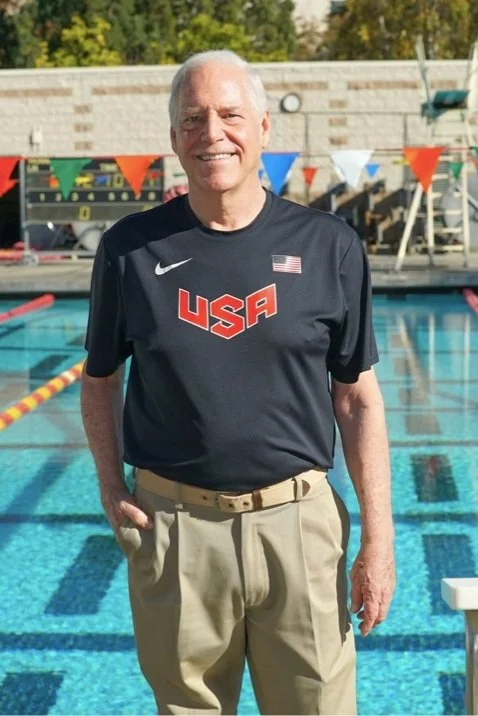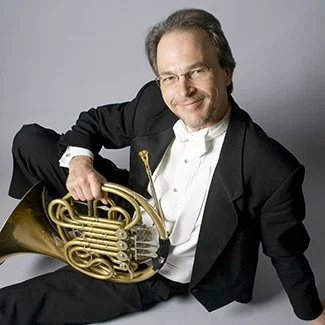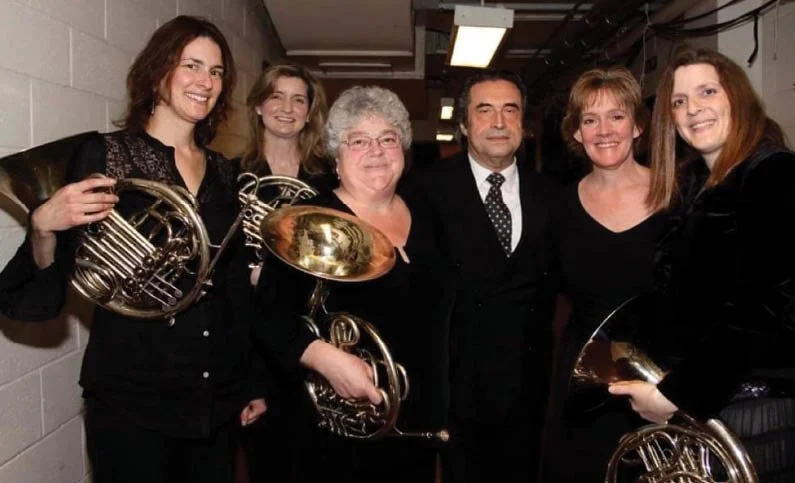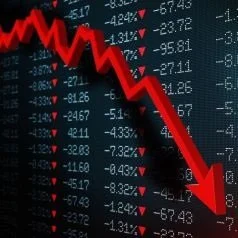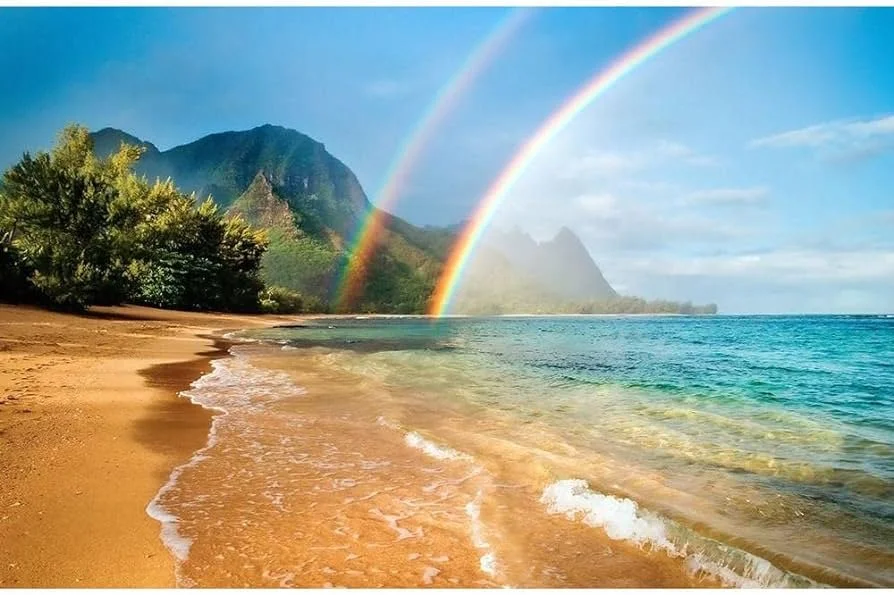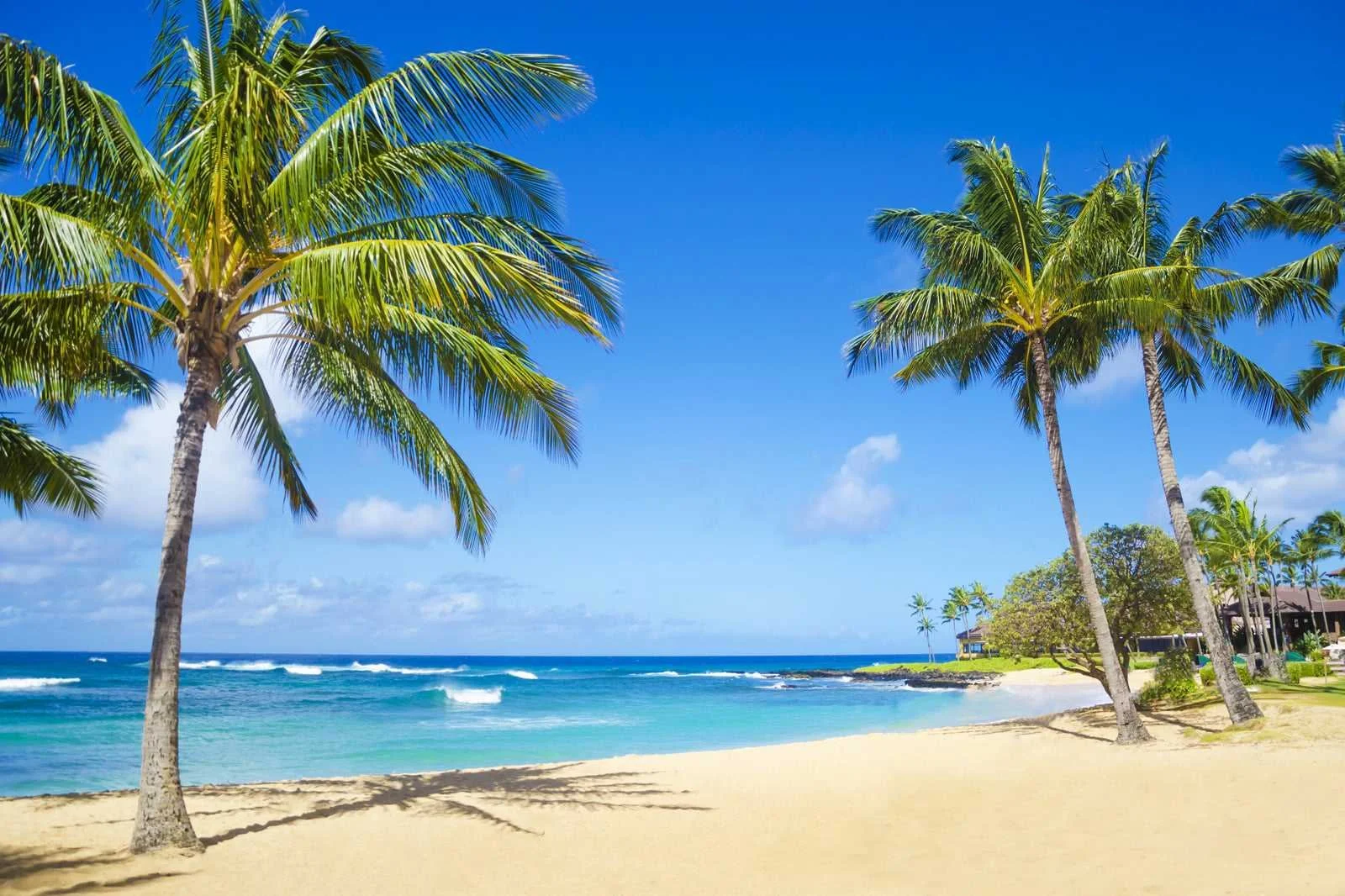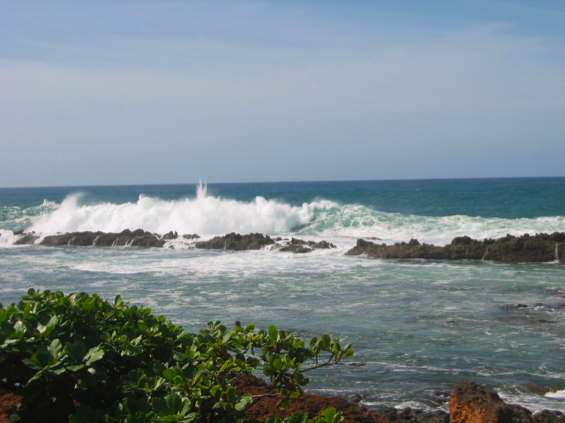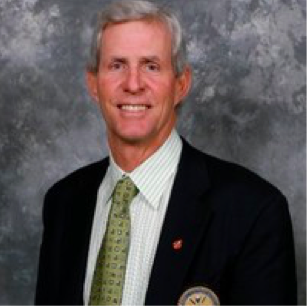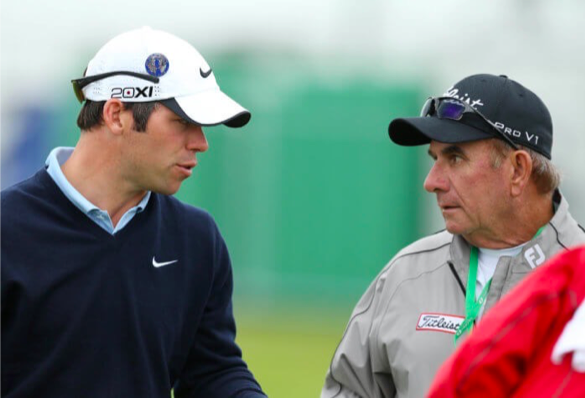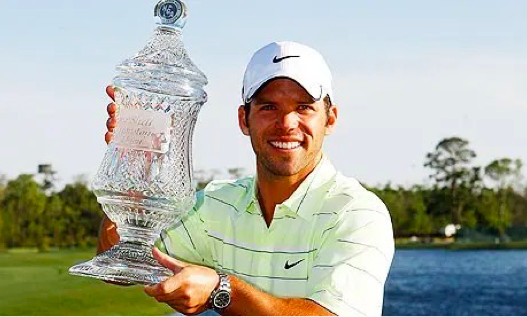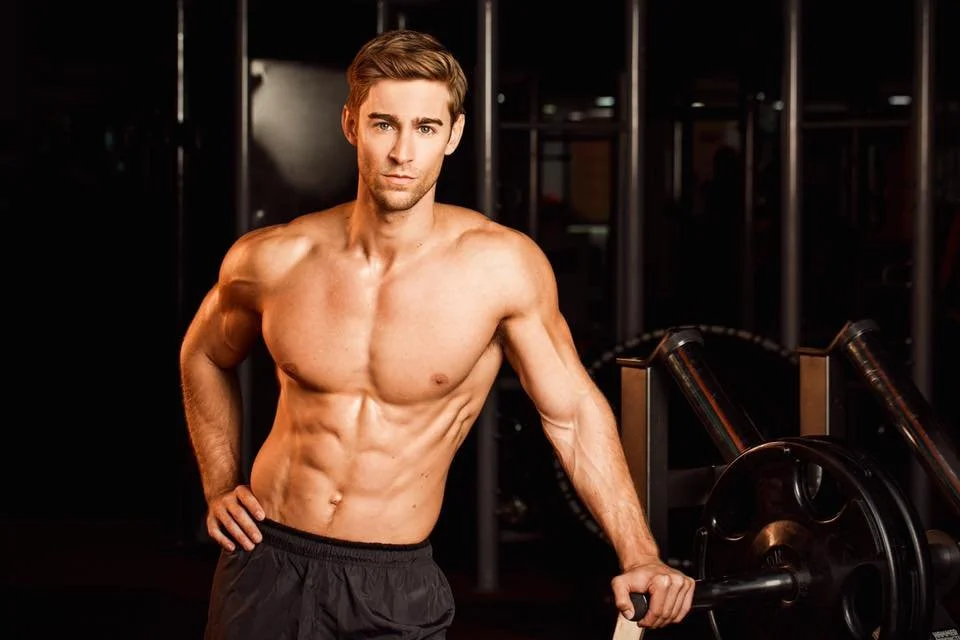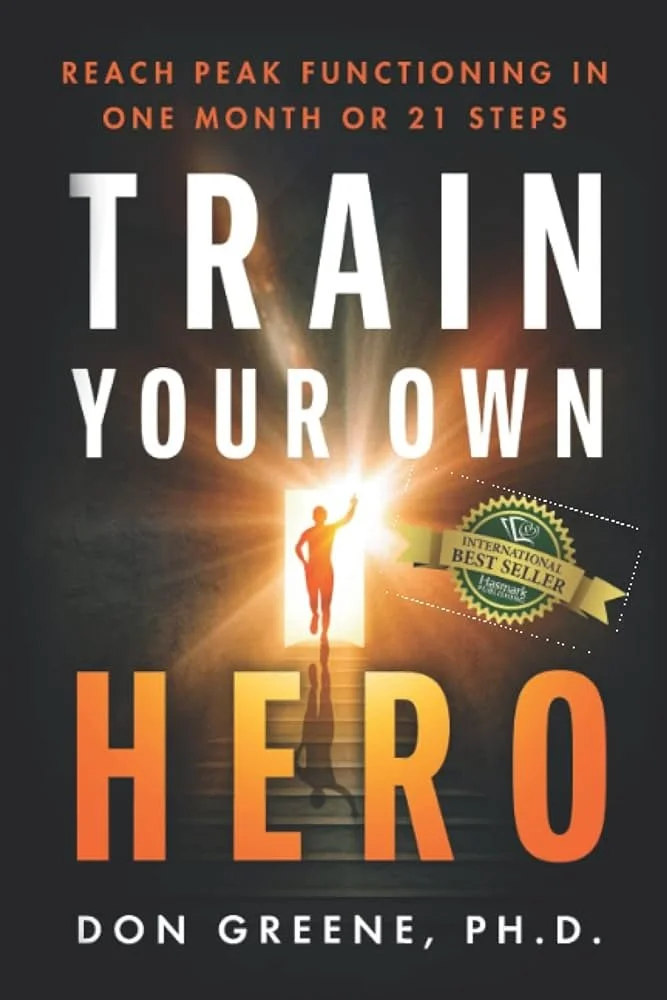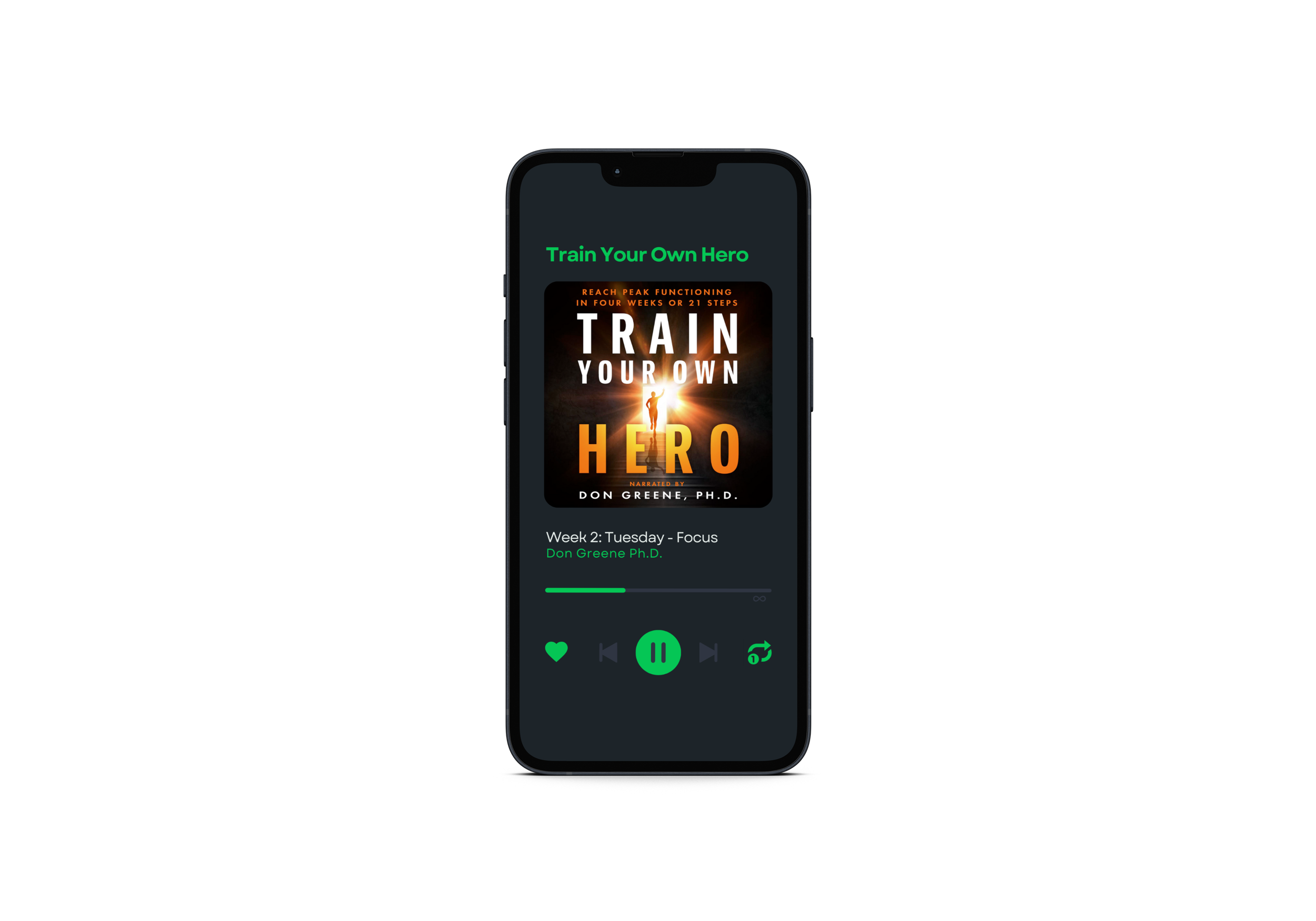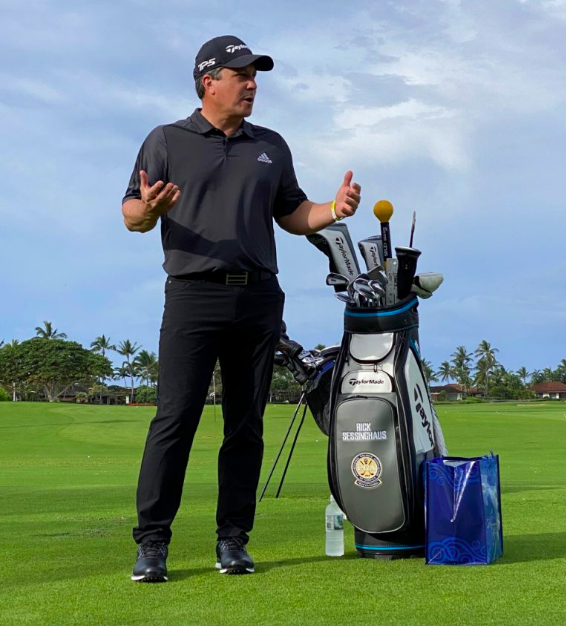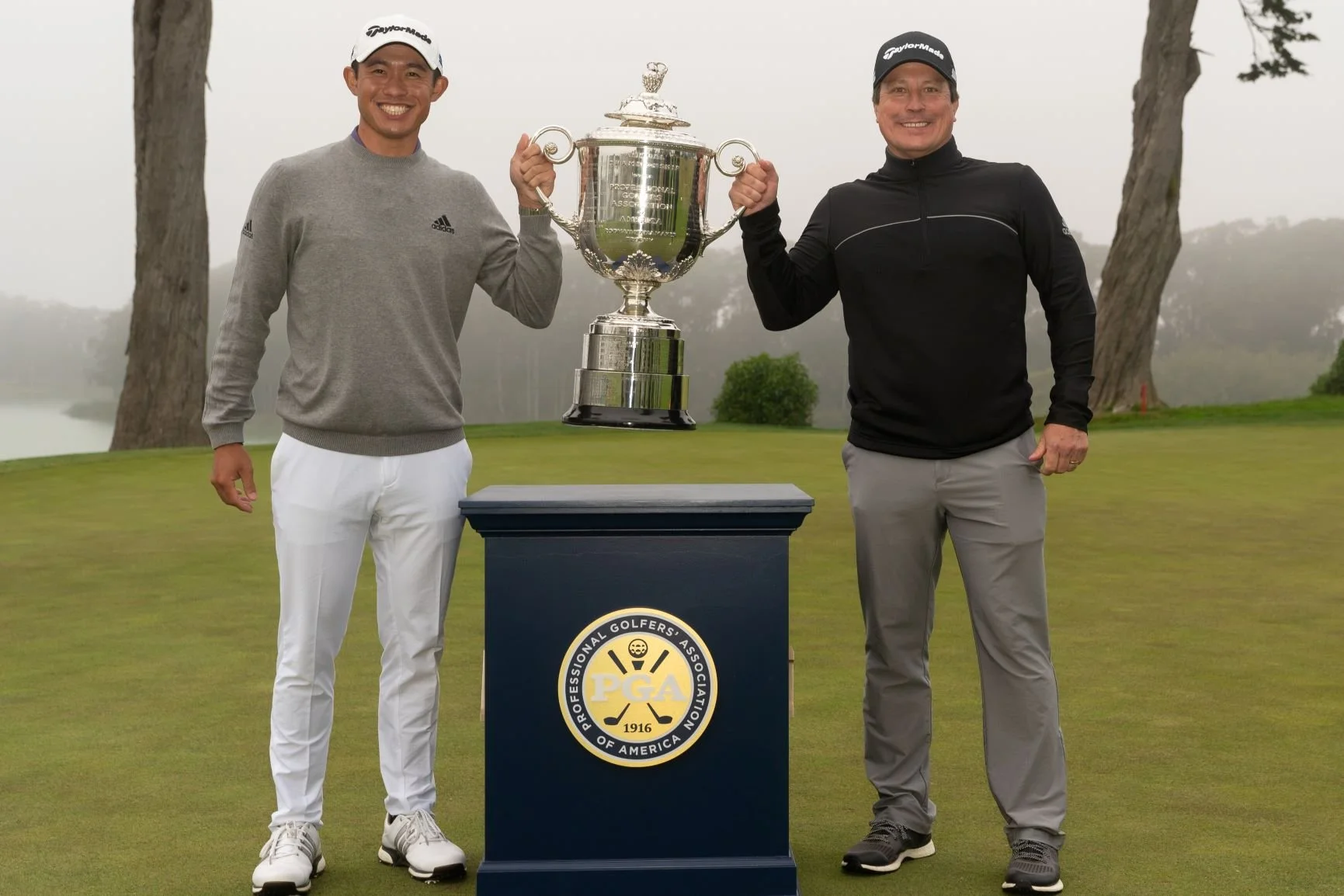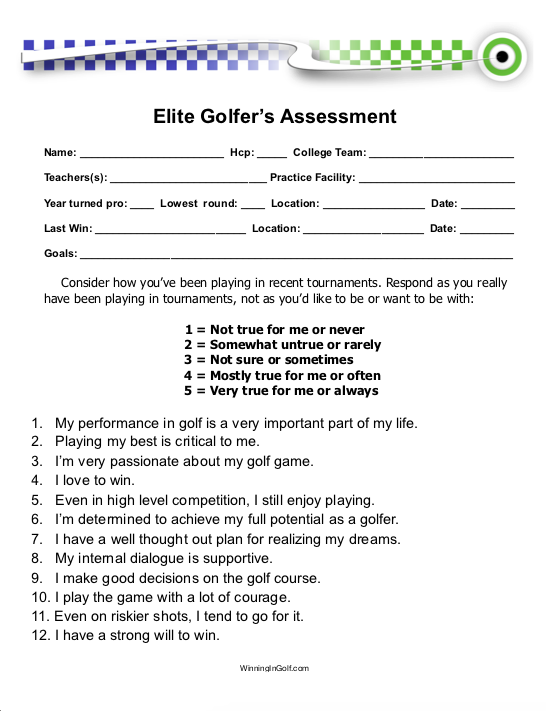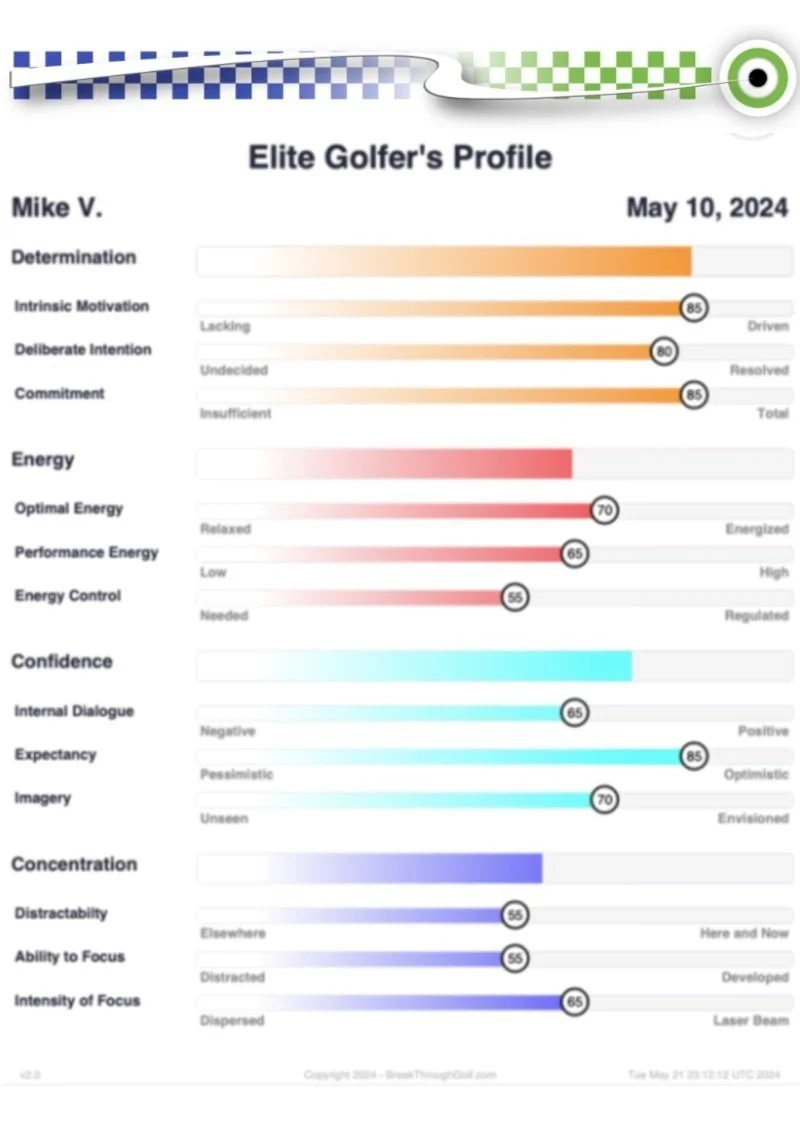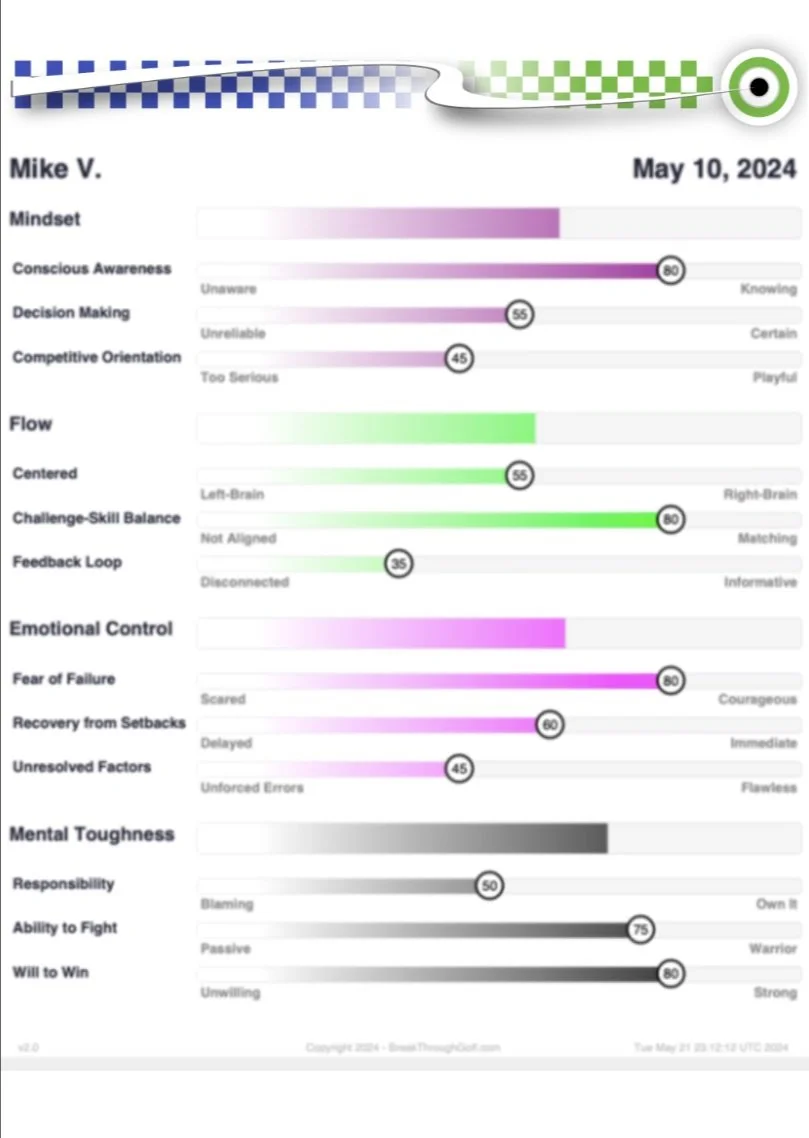This is my journey in and out of golf condensed into a 10min read with pictures to show what I have to offer you as a golfer.
MY Journey
Since 1984, I’ve counseled elite athletes to win Olympic gold medals, World Championship titles and professional golf tournaments. My private clients became 1st time winners on the PGA, LPGA, and mini-tours. Years ago, one of my international players moved from #186 in the World Golf Rankings to #3.
I went to high school in Brooklyn, New York in the mid-’60’s. I was the captain of my school’s swimming and water polo teams. I finished in the top 5 in diving in the National Championships all four years of high school. In my senior year, I received a Congressional Appointment to the U.S. Military Academy at West Point.
At West Point, I learned how to handle the toughest conditions and thrive under extreme pressure. I was also the first string diver on the varsity swimming team and competed in lacrosse in the off-season. My major areas of study at the academy were complex decision making strategies and counter-revolutionary warfare.
After graduation, I was commissioned as a lieutenant in the combat arms. I went through paratrooper training and Ranger School, with hand to hand fighting, survival training in the swamps and nighttime parachute jumps. I was the first in my West Point class to join the Army’s elite Special Forces, known as the Green Berets.
After resigning as a Captain after nine years in the Army, I received my Master’s and Ph.D. in Psychology, with a specialization in Sports Psychology. For my doctoral dissertation, I trained SWAT Officers to make better decisions and shoot more accurately under high stress as tested in a live-fire, move and shoot course.
After graduation, I joined five-time Olympic diving Coach, Dr. Ron O’Brien as the Sports Psychologist for the 1984 U.S. Olympic Championship Diving Team. Our team included double gold medalist Greg Louganis, and 10 Meter diver Michele Mitchell, who won her first Olympic silver medal, before winning the World Championship.
After the Olympics, the diving team moved to Florida, where I worked with Manager Bucky Dent and the Texas Rangers. I also coached Grand Prix drivers. One of the drivers set several track records and won a number of pole positions on his way to winning his first formula series championship.
After moving to Florida, I was introduced to master golf teacher Peter Kostis. At the time, Peter was working with many top PGA and LPGA touring pros. He also taught for Golf Digest’s Schools. Peter was very interested in mental training for golf and offered me private lessons in exchange for my teaching him about Sports Psychology.
After I’d started with Peter, 12 of his PGA pros were with him preparing for the Doral Open in Miami. Peter had all of them take a sports psych assessment. Then, over the next 3 days, I met with each of them to review their individual profiles and answer their interesting questions. They included Fred Couples, Tom Kite and Davis Love, III.
A few months later, Peter introduced me to three of his veteran pros: Gary Koch, Roger Maltbie and Larry Rinker. They were all getting ready for the upcoming Masters Tournament in Augusta. I started meeting with the players at St. Andrews in Boca Raton, and then went with them and Peter to my first Masters.
After we got back, Peter had me work with three of his struggling LPGA players. Two months later, Laurie Rinker won the LPGA Corning Classic. Lori Garbacz won the Tucson Open, her first win after 9 years on tour. Beth Daniel started on a string of victories leading to her induction into the LPGA Hall of Fame.
The following year, I began teaching Sport Psychology full-time at the Golf Digest’s Schools. For five years, I was fortunate to work alongside some of the finest teachers in golf and also learn from them. Besides Peter, they included such masters as Bob Toski, Davis Love, Jr., John Elliott and Paul Runyan.
In 1989, I wrote about one of the toughest shots in golf, with a drawing of me hitting a drive in front of a group of students. That was somewhat of a challenge for me; I’d only started lessons a year before. Now, I was not only expected to play well, week in and week out at golf schools, but offer practical advice on how to do it.
Later that year, I went to Jamaica before the World Championships. I worked with Brigette Foster-Hylton, Asafa Powell and Shelly-Ann Fraser-Pryce. None of them had ever won in the World Championships before. Brigette won the 100 meter hurdles, Shelly-Ann and Asafa won gold medals in the 100 meters and relays.
Later that year, I was featured in a Golf Digest article, Becoming Mentally Tough, including a photo of me at a golf school. I also wrote a six-part series on mental training for golfers. It began with a new version of a sport psych assessment, which I reworded specifically for golfers.
At the same time, I began working with a French horn player and an opera singer, who were preparing for big auditions. Neither had won before. I worked with each of them on the phone for about two months. With their permission, I recorded our sessions. After they both won their auditions, the tapes were transcribed and put into my first book.
A horn teacher in NY read my book. She was interested in me training four of her musicians, preparing for an audition with the Metropolitan Opera Orchestra. It was three months away. More than 250 musicians applied for the audition. I worked with her musicians every week before the audition. They came in 5th, 4th, 2nd and 1st!
Soon after that, I was invited to teach at Juilliard. Although the musicians were very talented and well trained, they didn’t know how to compete in high pressure situations and win auditions. For the next five years, I taught at Juilliard, the New World Symphony Academy and the Met Opera Young Artist’s Program. wrote Performance Success.
Many of the performing artists who I taught at Juilliard, the New World Symphony and the Met Young Artists’ program went on to win major auditions with symphony orchestras and opera companies. My private clients also won a 1st time Grammy Award, multiple Emmy’s, and a first time nomination for a Tony Award.
When I was in NY, I got a call from Merrill Lynch’s corporate training department. Their senior traders had evidently been in a slump for many months after a disastrous 20% downturn in the market. Their manager was looking for a Sports Psychologist to help get them out of their slump and also work with him on his golf game.
I soon met with the executive staff at Merrill Lynch, including Eddie McMahon, the Manager of Trading. Besides working with his senior traders who had been struggling, Eddie (in the white cap) wanted to know if I could help him break 80. He’d never shot lower than an 84, but I gave him reason to be optimistic, if he was willing to work.
I met with Eddie and each of his most senior traders once a week for two months. Then Eddie reviewed their Profit and Loss Statements, the all important bottom line on Wall Street. We were both thrilled to find that in just two months, his traders’ P&L had gone up an amazing 21%!!! That’s when he started me working with his floor brokers.
In early September, I was home watching the news on TV. It was my last week off from Merrill lynch on my summer vacation, and before the Fall semester began at Juilliard. I was soon looking in disbelief as a hijacked plane crashed into the North Tower of the World Trade Center. Seventeen minutes later, a second plane hit the South Tower.
For the next three months, I worked closely with everyone at Merrill Lynch. First, setting up temporary operations in Jersey City, and then helping everyone deal with the severe mental and emotional difficulties following the attacks. By mid-December, things at Merrill were getting somewhat back on track, but they were far from normal.
By then, I felt like I had given my absolute best. But real healing would take much longer, if ever, for some. I found that I could take a leave of absence from Juilliard and the Met. And by then, Eddie had already broken 80 several times. I needed to get out of the city for my own healing and there was only one place I wanted to be.
I arrived in Honolulu in late December. I didn’t do much of anything for a long time other than sit on the beach and stare mindlessly at the waves, trying to make sense of everything that happened back in NY. But I eventually gave up on that and decided to begin enjoying the pleasures that Hawaii had to offer.
I also played my first round of golf in years with one of my West Point classmates. He was a member at the Waialae Country Club, which was the site of the PGA’s Sony Open. After the round, my friend introduced me to Greg Nichols, Waialae’s Head Pro and Director of Golf.
Greg wanted me to meet one of his top amateurs, Parker McLachlin. Greg had taught him since he was eight years old. Parker worked at Waialae in exchange for practice and playing privileges. He eventually went to UCLA on a full golf scholarship. He had a few second place while he was at UCLA, but never won a tournament.
When I first met Parker, he was recovering from a wrist injury that had hampered him in college. After he completed a sports psych assessment, we validated his profile. Then I designed a detailed game plan for his progress and ultimate success. After that, we spent lots of quality time together before he began playing in local tournaments.
Four months later, Parker went to Northern California to play in a Monday qualifier. It was for a Nationwide mini-tour event. He qualified, made the 36 hole cut, got his first paycheck and immediately turned pro. Within six months, Parker won his first Hooters’ Tour event. He shot a final round 66 to come from behind for the victory.
In the next two years, Parker won four other mini-tour events on the mainland, as well as the Kona Open in Hawaii. He also successfully completed Q-School, earning fully exempt playing status on the PGA. He also qualified to play in the US Open Championship (teeing off at Shinnecock and then with his proud Dad and me).
Parker’s biggest win was at the PGA’s Legends-Reno Tahoe Open in 2008. He started with a 68, followed by a 62, and then a 66 on Saturday. On Sunday, walking down the 18th fairway, he turned to the TV Camera and said, “Hey Don, we did it!” Then he stepped onto the green and made a 15 foot birdie putt to win by 7 strokes.
Along with the winner’s silver trophy, he received a check for $540,000, and a two-year, full exemption on the PGA Tour. By the end of the season, Parker had earned a total of $1.28 million in prize money. He was only 29, but well on his way to making more than $2.5 million in winnings over the course of his PGA career.
I was on my way to Arizona to join Peter Kostis once again. In the time since I moved to Hawaii, he had moved to the Grayhawk Golf Club in Scottsdale. He wanted me to train his new staff of instructors and also work with some of the tour players he was teaching. At the time, they included Chez Reavie, Grace Park and Mark Hensby.
Peter also wanted me to work with Paul Casey. Paul had grown up in England, but went to Arizona State on a golf scholarship. He competed for ASU, and was also a member of the Ryder Cup Team. In 2004, his European team scored a 18 to 9 win over the Americans, the largest margin of victory since the first Ryder Cup in 1997.
In 2005, when interviewed about his European Team’s victory over the Americans, Paul said, “We wanted to beat them as badly as possible” and "Americans are stupid”. After that, whenever he played at PGA events in the states, the normal courteous golf fans heckled him relentlessly. He dropped from #42 in the World Golf Rankings to #186.
That’s when Peter introduced me to Paul, saying that his golf game was gone. Paul had gone four months without making a single cut. He’d totally lost his drive and will to win. Golf Today News described him as being in a "horrific slump”. Golf World reported that Paul had "panic attacks on practice ranges”. Peter was very concerned.
Paul and I began working together intensely. We met often, on the course and off. We developed a very close relationship. I attended all his lessons with Peter and went to his practice rounds and tournaments. His progress didn’t happen as fast as any of us wanted, but then things really started to turn around for Paul and his golf game.
Later that year, Paul came in 3rd in the Omega Masters in Switzerland. Then, he won the TCL Classic Open in China. In 2006, he won the Johnny Walker Championship and the HSBC World Matchplay Championship in England. Paul was named the European Golfer of the Year. In 2007, he won in Abu Dhabi and moved up to #13 in the WGR.
In 2009, after recovering from a serious rib injury, Paul won the BMW Championship in England and then the Shell Houston PGA Open in Texas. The PGA Open win in Houston moved Paul up to #3 in the WGR. After that, he had a series of tournament wins in both the U.S. and Europe.
After Paul was doing so well, I decided to move to Los Angeles, where I could work with both performing artists and athletes. These included professional musicians from the recording studios, dancers at the Colburn School, auditioning actors in Hollywood and college athletes from several Division 1 programs.
I also had time in L.A. to reflect on my groundbreaking work in Performance Psychology. After 40 years practice, I’d finally “cracked the code” on what caused even the best athletes and performers to self-sabotage. In the process, I also discovered how to minimize unforced errors and create flawless execution in flow.
That’s when I started to write about my new approach. In 2022, Train Your Own Hero: Reach Peak Functioning in One-Month or 21 Steps was released on Amazon. Within two weeks, it reached International Best Seller status in eight different countries. TheTrain Your Own Hero Journal and the audible version were released in 2023.
In 2023, I met up with Dr. Rick Sessinghaus. Rick is a former touring pro, named as one of Golf Digest’s Top 50 Instructors in America. He has a Master’s Degree and Doctorate in Applied Sports Psychology. He is the performance coach for many top juniors, collegiate and elite professional golfers.
Rick has been PGA Tour star Collin Morikawa’s swing and mental coach since he was eight. Collin won five times at Cal Berkeley, and then won both the 2020 PGA and 2021 Open Championships. Rick is the Co-Founder of the FlowCode Golf Academy that takes golfers from a state of fear to a state of flow.
Last year, Rick and I collaborated on The Elite Golfer’s Assessment (EGA). The EGA is a scientifically-based, online questionnaire that takes less than 15 minutes to complete. It measures and graphically profiles the eight factors involved in golfers performing flawlessly in flow at their peak level of functioning…or why they’re not.
If you’ve not been playing well, and don’t know exactly why, there’s no need to guess, especially about something so important. Just complete an assessment and review your individual profile. Then you’ll know just what you need to do to shoot your lowest scores and play your best golf ever. Are you ready? Go for it!

